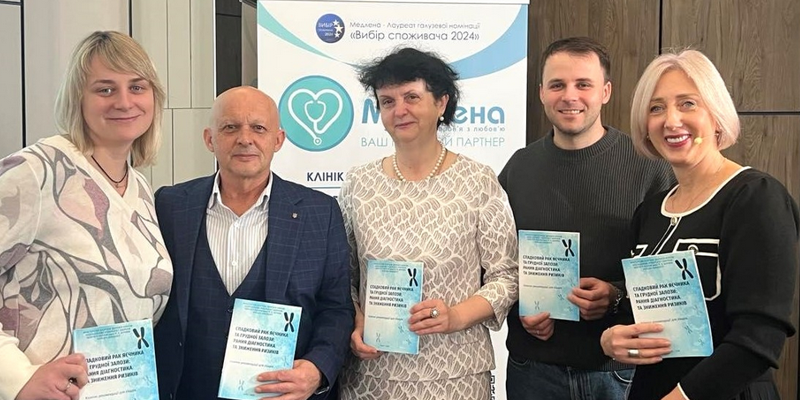The presentation of the clinical guidelines “Hereditary Ovarian and Breast Cancer: Early Diagnosis and Risk Reduction” took place on October 25 during the workshop “Hereditary Syndromes, Ovarian and Breast Cysts: Early Diagnosis, Classification, Prevention, and Treatment” held at the Bratislava Hotel in Kyiv.
The head of the Department of Oncology, Professor Prokip Gordiichuk, presented the rationale for the relevance, necessity, and timeliness of these guidelines. He emphasized that hereditary cancer develops as a result of a genetic mutation passed from parents and follows an autosomal dominant pattern of inheritance — meaning a 50% chance of transmission to offspring. Inheriting a mutation does not guarantee cancer, but it significantly increases the risk of developing it. Every 10th to 20th patient with breast, ovarian, colorectal, or prostate cancer shows signs of familial disease.
According to WHO data, in 2022 the structure of oncological diseases in Ukraine placed these cancers among the most common: colorectal cancer ranked first, breast cancer second, prostate cancer fourth, and ovarian cancer eighth — indicating a substantial prevalence of hereditary cancer in Ukraine.
Identifying a gene variant predisposing to hereditary cancer through genetic testing can have at least three significant implications: - predictive value for cancer therapy, expanding the therapeutic options for the patient; - personalized preventive strategies, including organ-specific surveillance and prophylactic surgeries; - family testing for the identified gene, extending the therapeutic and preventive benefits to relatives.
The authors — Professor Natalia Tsip, Associate Professors Olena Manzhura and Anastasiia Samusieva — highlighted that the guidelines present modern approaches to diagnosing, preventing, and reducing the risks of hereditary ovarian and breast cancers. These recommendations are based on the main positions of leading international organizations — ESMO, ESGO, and NCCN.
The guidelines summarize evidence-based data on the management of patients carrying pathogenic mutations in BRCA1/2, PALB2, RAD51C/D, BRIP1, and other genes. They cover genetic testing, screening algorithms, medical and genetic counseling, preventive surgical interventions, and pharmacologic risk reduction strategies. The document also addresses the role of lifestyle factors, hormone therapy, and assisted reproductive technologies in women with hereditary predisposition to malignancies.
The authors believe that the presented recommendations will be of practical value to oncologists, gynecologists, family physicians, geneticists, and all specialists involved in the early diagnosis and prevention of hereditary cancer forms.





